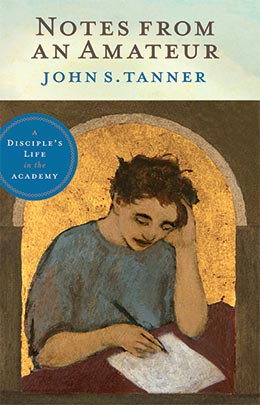On Beyond Y
John S. Tanner, Notes from an Ameteur: A Disciple’s Life in the Academy (Provo, UT: Religious Studies Center; Salt Lake City: Deseret Book, 2011), 83–5.
This summer I hiked Y Mountain numerous times for my morning exercise. I like the hike because it is close enough that I can get to the trailhead quickly, steep enough that it provides good exercise, and short enough that I can do it before work. Plus it rewards one with a bird’s-eye view of the valley both up and back, with vistas enhanced by that special satisfaction available to only those who “earn the view,” to use a phrase I often repeat to my children when hiking.
The main disadvantage of the trail, for my taste, is that it is so popular. Unless I get going well before daylight, I always hike in company. This is not so, however, whenever I hike beyond the Y. It always surprises me how few people hike the narrow trail that snakes off from the top right corner of the block Y, ascending up to a large outcropping of rock and then around Y Mountain along Slide Canyon. Y Mountain is actually deep, and beyond the Y the vegetation changes for the better. As one goes back into the mountain, one leaves the drab shrub oak behind and enters a world of evergreens, aspens, wildflowers, and meadows. I remember the first time I discovered the lovely, lush, lonely landscape beyond the Y. It was a revelation. There is a whole world on beyond the Y.
I felt like Conrad Cornelius O’Donnel O’Dell, that proud young man who, when learning to spell, thought he knew everything when he got to Z.
Then he almost fell flat on his face on the floor
When I picked up the chalk and drew one letter more!
A letter he never had dreamed of before!
And I said, “You can stop, if you want, with the Z.
Because most people stop with the Z.
But not me!
In the places I go, there are things that I see
That I never could spell if I stopped with the Z. [1]
Those who stop at Z (or Y) may not realize that the mountains ringing this valley only seem flat and monolithic. In fact, they enfold deeper and more varied scenery than is visible from the valley. For example, there is a lovely waterfall on Battle Creek Trail just up from Pleasant Grove. Above the falls, the trail passes through aspens and continues up to a high meadow skirting the face of Timp. Once you hike it, you never look at Mount Timp the same. The same is true when you hike Squaw Peak or traverse the saddle from South Fork to Rock Canyon or hike to the top of Y Mountain from the back—all hikes I did this summer. There is so much to see on beyond Y.
A university provides a natural home for adventurous spirits not content to stop at Y or Z. We are—or ought to be—explorers and guides in the landscape of learning. At its best, . . . research is not about “re-searching” but “new-searching.” It is about discovery. And there are few things more exciting in this life than intellectual discovery.
In our era, we don’t have the opportunity to be the first one to come upon a mighty waterfall or set our foot on an unclimbed peak or gaze upon some vast unknown sea like the explorers in Keats’s poem who first beheld the Pacific Ocean “with a wild surmise / Silent upon a peak in Darien.” [2] Maps nowadays are fully filled in. There are, alas!, no regions marked “terra incognita”; no timid cartographer’s warning “Here be dragons.”
Fortunately, however, there is still “terra incognita” in the regions of intellect. We are drawn to these regions precisely by the possibility of glimpsing strange and wonderful new things—dragons! It is our privilege to explore and map these realms on beyond Y, as well as to invite and inspire our students to undertake their own journeys of discovery.
Such intellectual journeys are not easy. Many a weary mile is required even to reach the foot of the mountains we climb. And mountains of the mind have steep ascents, which must be scaled in pursuit of hard-won discoveries. As the poet John Donne says,
On a huge hill,
Cragged and steep, Truth stands, and he that will
Reach her, about must and about must go”
(Satire III) [3]
But, oh!, the vistas from the top when you have earned the view. And the thrill of helping others discover brave new worlds!
You’ll be sort of surprised what there is to be found
Once you go beyond Z and start poking around!
So, on beyond Zebra!
Explore!
Like Columbus! [4]
For we “really don’t know all there is to be known.” There are worlds to discover on beyond Y.
Notes
[1] Dr. Seuss, On Beyond Zebra (New York: Random House, 1955).
[2] John Keats, “On First Looking into Chapman’s Homer,” lines 13–14, in The Norton Anthology of English Literature, 7th ed. (New York: W. W. Norton & Company, 2000), 2:826–27.
[3] John Donne, “Satire III,” lines 79–81, in The Norton Anthology of English Literature, 7th ed. (New York: W. W. Norton & Company, 2000), 1:1259.
[4] Dr. Seuss, On Beyond Zebra.
